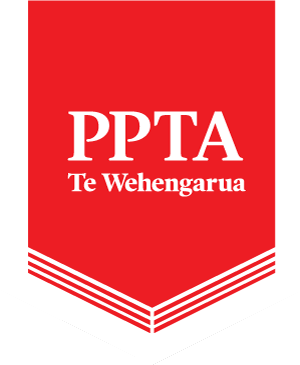Call for taskforce on flexible learning spaces
PPTA Te Wehengarua Annual Conference has decided to set up a taskforce to work through and make progress on members’ serious and long standing concerns about flexible learning spaces.
Louise Ryan, PPTA Te Wehengarua national executive member, said annual conference back in 2017 called for comprehensive research into flexible learning spaces. “We affirmed then the need for changes to education - including physical learning environments - to be thoughtful, coherent, and underpinned by research.
“That doesn’t sound unreasonable does it? And yet here we are, six years later, asking for pretty much the same thing.
Changes need to work for students and teachers
“It is incredibly important that any changes made in the education system, including the move to flexible or innovative learning environments, is not done on whim or on trend, but rather as a result of careful evaluation of what will work for students and teachers, in their own context.
Not all flexible spaces are necessarily innovative. According to the Ministry of Education, flexible learning spaces consist of multiple spaces for many types of individual and group- based teaching and learning practices. However the space alone will not make it innovative, especially if teachers are not able to adapt their practice within the space available. Conversely, it is possible to still be innovative while in more traditional or so called ‘single cell’ classrooms.
Learning spaces first and foremost
“Members we have spoken to have stressed the importance of having consultation that is meaningful and genuine, with the people who will need to make the flexible space work. The conference paper notes that in New South Wales, there is the intention to stop construction of open learning class rooms. One reason cited was around issues with architects leading the way. Don’t get me wrong - I get they are important - but it is important that we do not lose sight of the need for spaces to be designed first and foremost as learning spaces.”
Louise said members have spoken of teaching in buildings, which while beautifully designed do not function as effectively as they could because those making the decisions have not understood the particular requirements of being in a school. “This might be miscalculating the number of teaching spaces in a building or the number of students in a class; not recognising what the particular uses of a space might be, or not allowing for the wear and tear of a school environment, or just plain forgetting what they might have been tempted by as a teenager.
Challenging the Ministry again
“It is fundamental that any changes are based on evidence and we are challenging the Ministry of Education again on the need to research the effectiveness of flexible learning spaces in terms of their impact on aspects such as student achievement, student and teacher wellbeing, and teaching and learning, in the Aotearoa New Zealand context.”
Thomas Newton, PPTA Te Wehengarua Canterbury regional chairperson, said many Christchurch schools damaged by the earthquakes had been rebuilt as flexible learning spaces, which many teachers referred to as barns.
“We were assured the new schools were self-regulating buildings designed to maintain their own temperatures – but they don’t. If you think the last period on a Friday wtih Year 10s is bad, add in the Canterbury norwesters in flexible learning spaces.
“Not all teachers can teach in them effectively and some subjects cannot be taught effectively in them.”.
Kate Halls, PPTA Te Wehengarua West Coast regional chairperson, said she was relieved and delighted to see teacher consultation and wellbeing at the heart of the conference recommendations. “A lot of schools are in desperate need of rebuild, and it’s essential that teachers who are going to be using redesigned spaces, not just the people who show up to cut the ribbons, have their voices heard.”
Last modified on Monday, 4 December 2023 14:31
